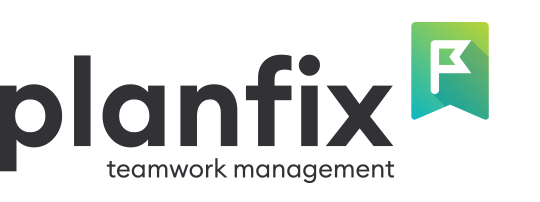
Keeping up with your schedule these days can be a real challenge. With meetings, deadlines, personal tasks, and last-minute surprises, it’s easy to feel overwhelmed. That’s where daily planner apps come in — they help organize your day, keep you focused, and make sure nothing slips through the cracks. Whether you’re a professional balancing a packed calendar, a student managing assignments, or a freelancer juggling multiple clients, the right app can make all the difference. In this guide, we’ll take a look at the best daily planner apps for 2025, starting with Planfix — a powerful tool for both business and personal use — along with nine other great options to help you find the perfect match.
What Are Daily Planner Apps and Why Do You Need Them?
Daily planner apps are software solutions that help you organize your tasks, appointments, and goals within a structured digital interface. Unlike traditional paper planners, these apps offer dynamic features like reminders, calendar syncing, and task prioritization, making them adaptable to modern demands. They range from simple to-do list tools to comprehensive platforms integrating project management, CRM, and scheduling capabilities.
Why do you need a daily planner app? Here are a few reasons:
- Efficiency: Streamline your daily tasks and avoid wasting time on disorganization.
- Productivity: Stay focused on your priorities and accomplish more in less time.
- Flexibility: Access your schedule from anywhere, whether on your phone, tablet, or computer.
- Integration: Sync with other tools like calendars, email, and project management software effortlessly.
With the rise of remote work and flexible schedules, apps for daily planning have become essential for maintaining structure and productivity.
How to Choose the Best Daily Planner App
Choosing the best app for daily planning requires evaluating key features that align with your needs. Here’s what to consider when exploring planner apps:
- Task Management: Look for tools that allow you to create, prioritize, and track tasks with ease, ideally with subtasks or recurring options.
- Calendar Integration: Seamless syncing with platforms like Google Calendar ensures your schedule stays unified across devices.
- User Interface: A clean, intuitive design is crucial for quick adoption and efficient use, especially for beginners.
- Customization: The ability to tailor layouts, views, or notifications to your workflow enhances usability.
- Collaboration: For teams, features like shared calendars or task assignments are vital for coordination.
- Accessibility: Cross-platform availability (web, mobile, desktop) ensures you can plan anywhere, anytime.
- Pricing: A robust free version or affordable paid plans make the tool accessible without breaking the bank.
By carefully considering these factors, you can find the best daily planner app that aligns with your needs and helps you stay organized, productive, and focused. Remember, the right app is the one that fits seamlessly into your lifestyle and makes planning your day a breeze. With these criteria in mind, let’s dive into our list of the top 10 daily planner apps for 2025, starting with Planfix, a versatile solution designed to meet diverse planning needs.
1. Planfix
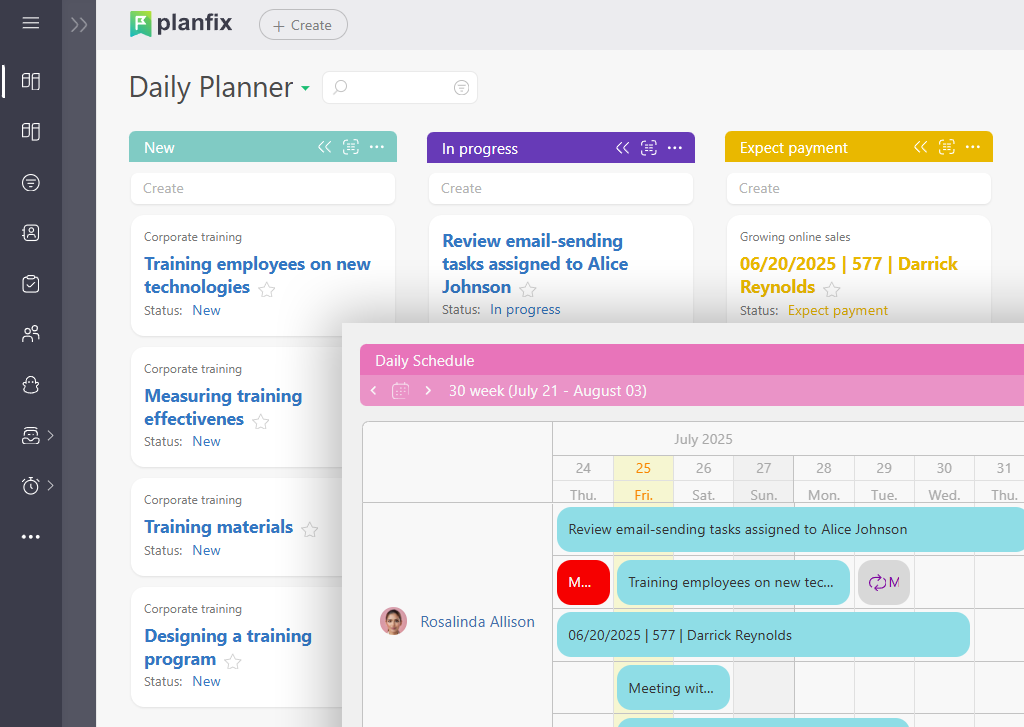
Source: https://planfix.com/
Planfix stands out as a powerful, all-in-one platform that goes beyond traditional daily planner apps, offering a robust suite of tools for businesses and individuals alike. Built with flexibility at its core, Planfix caters to those who need more than just a basic task list — it’s a comprehensive system for managing daily schedules, projects, and team workflows. Whether you’re organizing your personal day or coordinating a team’s meetings, Planfix adapts to your needs with its customizable interface and deep integration capabilities.
Planfix Features
Planfix combines daily planning with advanced business functionalities, making it a top choice among planner apps. Its feature set is designed to streamline both personal and professional tasks, offering a seamless experience for users who value structure and connectivity. Here’s a closer look at what Planfix brings to the table:
- Daily Planner: Create detailed daily schedules with tasks, deadlines, and priorities, all viewable in a clean, customizable layout.
- Hourly Calendar: Plan your day down to the hour with a visual timeline, perfect for time-blocking or managing tight schedules.
- Task Calendar: Sync tasks with a calendar view to see deadlines and commitments at a glance, ensuring nothing slips through the cracks.
- Daily Schedule: Organize appointments, reminders, and recurring tasks in one place, ideal for personal planning or team coordination.
- Integration with Google Calendar: Effortlessly sync your Planfix schedule with Google Calendar, keeping all your events unified across platforms.
- Business Meeting Scheduling: Schedule business meetings, set up calls, or arrange in-person sessions with built-in tools that support notifications and attendee management.
Planfix excels in its ability to scale — from a simple day planner app for individuals to a full-fledged business management tool. Its hourly calendar is particularly useful for professionals who need to allocate specific time slots for tasks or meetings, while the task calendar provides a broader perspective on upcoming deadlines. The integration with Google Calendar ensures you’re never out of sync, whether you’re toggling between personal and work commitments. For teams, the business meeting scheduling feature simplifies coordination, allowing you to set agendas, send invites, and even track follow-ups—all within the app. With Planfix, you’re not just planning your day; you’re building a system that evolves with your needs.
Planfix Pros and Cons
Planfix offers a wealth of advantages, especially for users seeking a great planner app with business-grade capabilities. However, its extensive features come with some trade-offs. Here’s a balanced look:
Pros
- Highly customizable interface adapts to individual or team workflows.
- Seamless Google Calendar integration keeps your schedule cohesive.
- Task and hourly schedule provides detailed and flexible planning options.
- Business meeting tools streamline scheduling and communication.
- Scalable from personal use to large team management.
- Robust free version includes core planning features.
Cons
- Learning curve may be steep for users new to advanced tools.
- Some features may feel overwhelming for basic daily planning needs.
- Mobile app functionality lags slightly behind the desktop version.
- Advanced integrations may require setup time.
These pros make Planfix one of the best daily planner apps for those who need a versatile, all-in-one solution, while the cons suggest it’s best suited for users willing to invest time in mastering its capabilities.
Planfix Pricing & Free Version
Planfix offers a generous free tier that includes access to its daily planner, hourly calendar, and task management features, making it a strong contender among free daily planning apps. Paid plans start at $5 per user/month, unlocking advanced integrations, meeting scheduling tools, and additional customization options. For businesses, enterprise pricing is available upon request, tailored to larger teams with specific needs.
Planfix’s free version is robust enough for solo users or small teams to get started, while its affordable paid plans make it accessible for those seeking more power. It’s a top organiser app that balances cost with functionality, ensuring you get value at every level.
2. Clickup
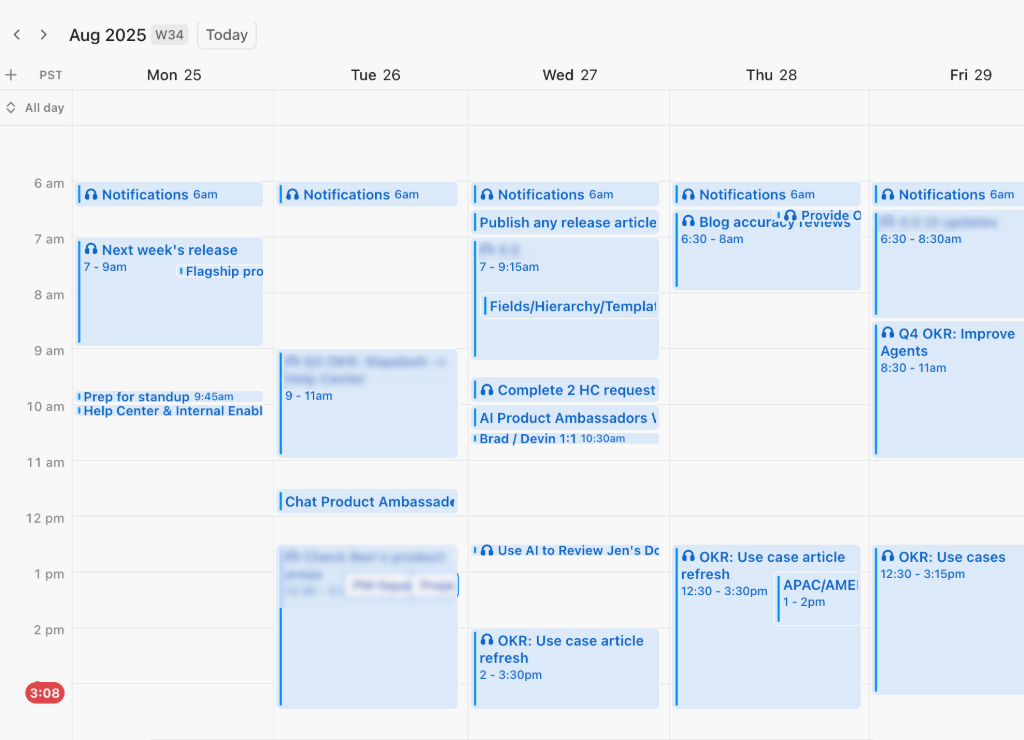
Source: https://clickup.com/
ClickUp is a powerhouse in the world of productivity tools, doubling as one of the best apps for daily planning. Known for its versatility, it’s a favorite among teams and individuals who want a single platform to manage tasks, schedules, and projects. With a rich feature set and a strong free version, ClickUp is a go-to for anyone looking to organize their day efficiently.
Clickup Features
ClickUp blends daily planning with project management, offering a customizable workspace that adapts to your needs. Its features make it a great schedule app for both personal and professional use:
- Task Management: Create tasks with subtasks, due dates, and priorities.
- Calendar View: Visualize your day, week, or month with a drag-and-drop calendar.
- Time Tracking: Monitor how long tasks take directly in the app.
- Docs: Jot down notes or meeting agendas within your planner.
- Automations: Automate repetitive tasks like status updates or reminders.
- Integrations: Sync with Google Calendar, Slack, and more.
ClickUp’s strength lies in its flexibility — whether you’re planning a busy workday or a personal project.
Clickup Pros and Cons
ClickUp’s feature-rich design comes with clear benefits and a few drawbacks. Here’s the breakdown:
Pros
- Extensive customization options for personalized workflows.
- Strong free version with unlimited tasks and users.
- Multiple views (list, calendar, board) enhance planning flexibility.
- Built-in time tracking aids productivity analysis.
- Wide range of integrations boosts connectivity.
- Collaborative features suit team use.
Cons
- Can be complex for beginners due to feature depth.
- Mobile app occasionally glitches with large projects.
- Advanced features locked behind paid plans.
- Setup time required for optimal use.
ClickUp’s pros make it a good choice among daily planner apps, though its learning curve may deter some users.
Clickup Pricing & Free Version
ClickUp’s free plan includes unlimited tasks, users, and basic features like calendar view and task management. Paid plans start at $7 per user/month, adding automations, advanced reporting, and more storage.
3. Todoist
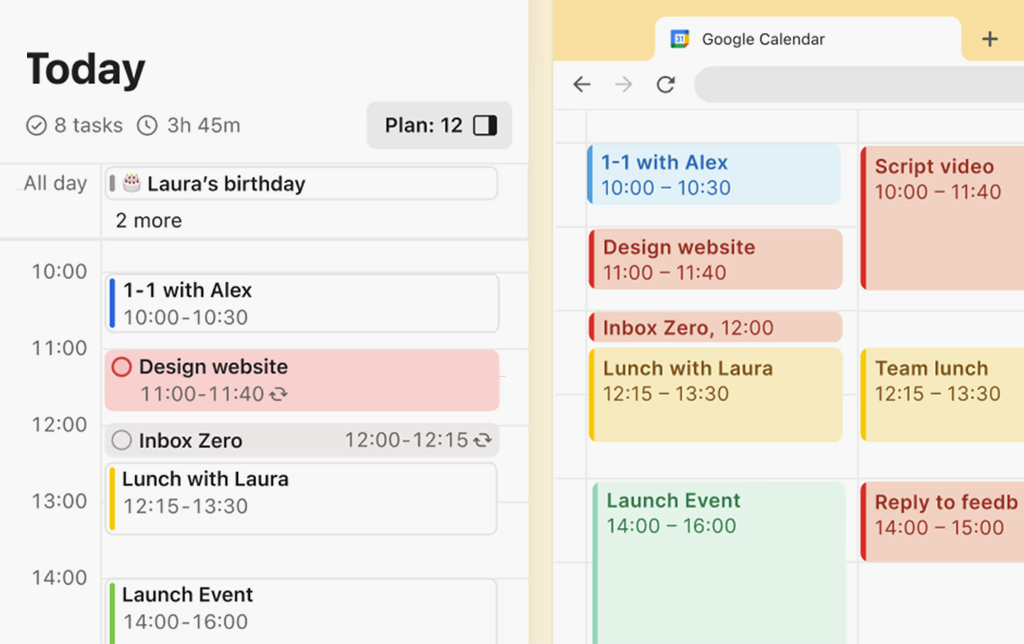
Source: https://todoist.com/
Todoist is a top contender among daily planner apps, celebrated for its minimalist design and effective task management. It’s a go-to for individuals who need a simple yet powerful tool to organize their day. Whether you’re managing work deadlines or personal errands, Todoist delivers a streamlined experience that’s easy to adopt.
Todoist Features
Todoist focuses on simplicity, offering a clean interface to capture and organize tasks efficiently. It’s a great planner app for those who want daily planning tools without complexity. Here’s what it brings to the table:
- Task Lists: Add tasks with due dates, priorities, and labels for quick organization.
- Recurring Tasks: Set tasks to repeat daily or weekly, like “Call client every Monday.”
- Projects: Group tasks into projects for work or home planning.
- Karma System: Earn points for completed tasks, gamifying your productivity.
- Natural Language Input: Type “Meeting tomorrow at 3 PM” and it auto-formats.
- Integrations: Sync with Google Calendar and Dropbox for a cohesive schedule.
Todoist’s strength is its ease of use—perfect for users seeking good schedule apps that don’t overwhelm. The natural language feature speeds up task entry, while integrations make it a solid daily schedule app.
Todoist Pros and Cons
Todoist offers clear benefits for personal planning, though it has limits. Here’s a balanced look:
Pros
- Intuitive design simplifies daily planning for beginners.
- Recurring tasks support routine management.
- Free version covers core needs effectively.
- Cross-platform syncing keeps you updated.
- Karma system adds motivation to planning.
- Lightweight and fast performance.
Cons
- Limited collaboration in the free tier.
- No native calendar view—relies on integrations.
- Reminders and filters require a premium plan.
- Minimal customization options.
These pros and cons position Todoist as a top choice among personal planner apps for solo users.
Todoist Pricing & Free Version
Todoist’s free plan includes unlimited tasks and up to five projects, ideal for basic day planner apps. Premium starts at $4 per month, adding reminders and stats, while Business at $6 per user/month suits teams. It’s an affordable pick among best daily planner apps.
4. Notion
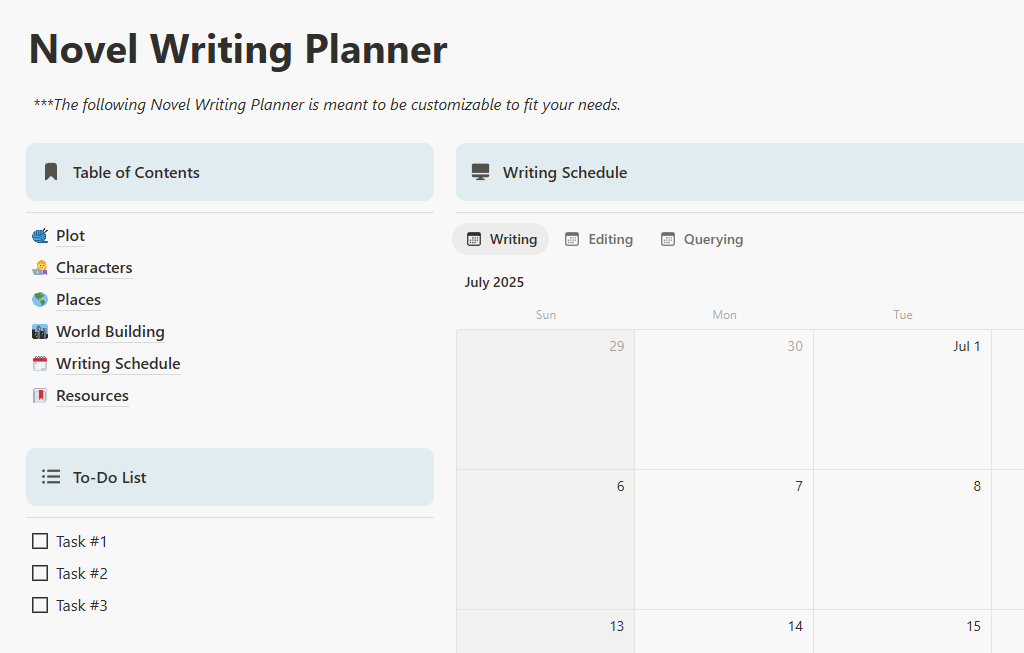
Source: https://notion.com/
Notion is a widely recognized name among daily planner apps, offering an all-in-one workspace that combines tasks, notes, and schedules. It’s marketed as a flexible tool for individuals and teams who want to customize their planning experience. While it’s popular for its versatility, Notion’s complexity can make it less straightforward compared to another daily planning tools.
Notion Features
Notion provides a modular system where users build their own planners using pages and databases. It’s pitched as a jack-of-all-trades app for daily planning, but its broad scope can feel overwhelming. Here’s what it offers:
- Pages: Create custom layouts for tasks, calendars, or notes.
- Templates: Use pre-made designs for daily or weekly planning.
- Database: Organize tasks in tables, boards, or calendar views.
- Collaboration: Share pages with others for team use.
- Integrations: Connects with Slack and Google Drive.
- AI Assistance: Offers basic writing or planning suggestions.
Notion’s appeal lies in its adaptability, making it one of the apps for weekly planning that users can tailor to their needs. However, it requires significant setup time, which might not suit those seeking quick, out-of-the-box daily schedule apps.
Notion Pros and Cons
Notion has its strengths, but its flexibility comes with trade-offs. Here’s an objective look:
Pros
- Customizable layouts for unique workflows.
- Free version includes basic planning features.
- Combines tasks and notes in one place.
- Supports team collaboration.
- Templates provide a starting point.
- Available across platforms.
Cons
- Steep learning curve for new users.
- No native time tracking or reminders.
- Calendar syncing needs manual workarounds.
- Can become cluttered with heavy use.
- Lacks the simplicity of focused day planner apps.
- Setup time may deter casual users.
These points show Notion’s versatility but also its challenges, especially for those who prefer streamlined good schedule apps.
Notion Pricing & Free Version
Notion’s free plan offers unlimited blocks and basic sharing, suitable for light personal planning apps use. Paid plans start at $8 per user/month, adding team features and AI tools. It’s a decent option among daily planners online, but the cost and complexity might not justify it for everyone.
5. Trello

Source: https://trello.com/
Trello is a popular choice among daily planner apps, known for its visual, card-based approach to task management. It uses a Kanban-style system that appeals to users who enjoy organizing their day with a simple drag-and-drop interface. Trello is widely used by individuals and small teams looking for an accessible way to manage tasks and schedules.
Trello Features
Trello organizes tasks into boards, making it one of the good planner apps for those who prefer a visual layout. Its straightforward design is easy to grasp, offering a practical solution for daily planning. Here’s what Trello includes:
- Boards: Set up boards for daily or weekly tasks, like “Work” or “Personal.”
- Cards: Add tasks with due dates, checklists, and attachments.
- Lists: Arrange tasks by status, such as “To Do,” “In Progress,” or “Done.”
- Power-Ups: Integrate with tools like Google Calendar and Slack.
- Labels: Use color-coded tags to prioritize or categorize tasks.
- Mobile App: Access your plans on the go with a user-friendly app.
Trello’s strength is its visual simplicity, making it a solid pick among apps for daily schedule management. The board system provides a clear overview, and Power-Ups add extra functionality for users who need more than basic planning.
Trello Pros and Cons
Trello offers a balanced set of features with some limitations. Here’s a look at its advantages and drawbacks:
Pros
- Intuitive Kanban layout is easy to use.
- Free version includes unlimited cards and boards.
- Mobile app supports planning anywhere.
- Power-Ups enhance integration options.
- Collaboration features work well for small teams.
- Visually appealing and organized design.
Cons
- Limited calendar view without integrations.
- No built-in time tracking or analytics.
- Can get cluttered with many tasks.
- Advanced features require a paid plan.
- Less suited for complex project tracking.
- Basic functionality may not meet all needs.
These points highlight Trello’s strengths for visual planners and its boundaries for more detailed planning.
Trello Pricing & Free Version
Trello’s free plan provides unlimited cards, boards, and basic Power-Ups, making it a strong contender among free daily planning apps. Paid plans start at $5 per user/month, adding automation and advanced views. It’s a cost-effective option for schedule planner apps.
6. Microsoft To Do
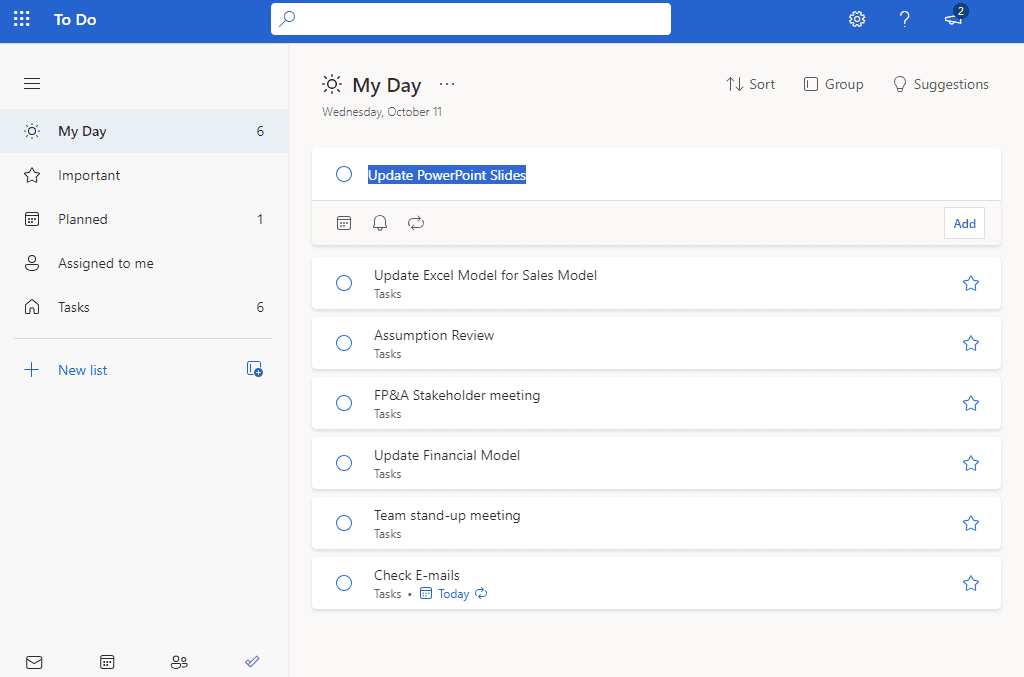
Source: https://to-do.live.com/
Microsoft To Do is a straightforward daily planner app that integrates seamlessly with the Microsoft ecosystem. It’s designed for users who want a simple, no-fuss tool to manage tasks and stay organized. Popular among Office 365 users, it offers a lightweight solution for daily planning needs.
Microsoft To Do Features
Microsoft To Do focuses on basic task management with a clean interface, making it one of the good schedule apps for personal use. It’s built to keep your day structured without extra complexity. Here’s what it provides:
- My Day: A daily view to prioritize tasks each morning.
- Lists: Organize tasks into custom categories like “Work” or “Shopping.”
- Reminders: Set due dates and alerts for important tasks.
- Integration: Syncs with Outlook and Microsoft Teams.
- Sharing: Share lists with others for collaboration.
- Suggestions: AI suggests tasks to add to your day based on pending items.
Microsoft To Do is a practical choice among personal planning apps, especially for those already using Microsoft tools. Its My Day feature encourages daily focus, while integrations keep it connected to your broader workflow.
Microsoft To Do Pros and Cons
Microsoft To Do delivers a simple planning experience with some limitations. Here’s a balanced overview:
Pros
- Free and easy to use with a Microsoft account.
- Seamless integration with Outlook and Teams.
- My Day feature helps focus on daily priorities.
- Available across web, mobile, and desktop.
- Lightweight design for quick task entry.
- List sharing supports basic collaboration.
Cons
- No native calendar view for scheduling.
- Limited features compared to more robust apps.
- Minimal customization options.
- Lacks advanced task management tools.
- Suggestions can feel basic or repetitive.
- Best suited for Microsoft ecosystem users.
These points show its appeal for simplicity and its boundaries for more complex needs.
Microsoft To Do Pricing & Free Version
Microsoft To Do is completely free with a Microsoft account, offering all core features like My Day, lists, and reminders. There are no paid tiers, making it a standout among free daily planning apps for basic use.
7. Any.do
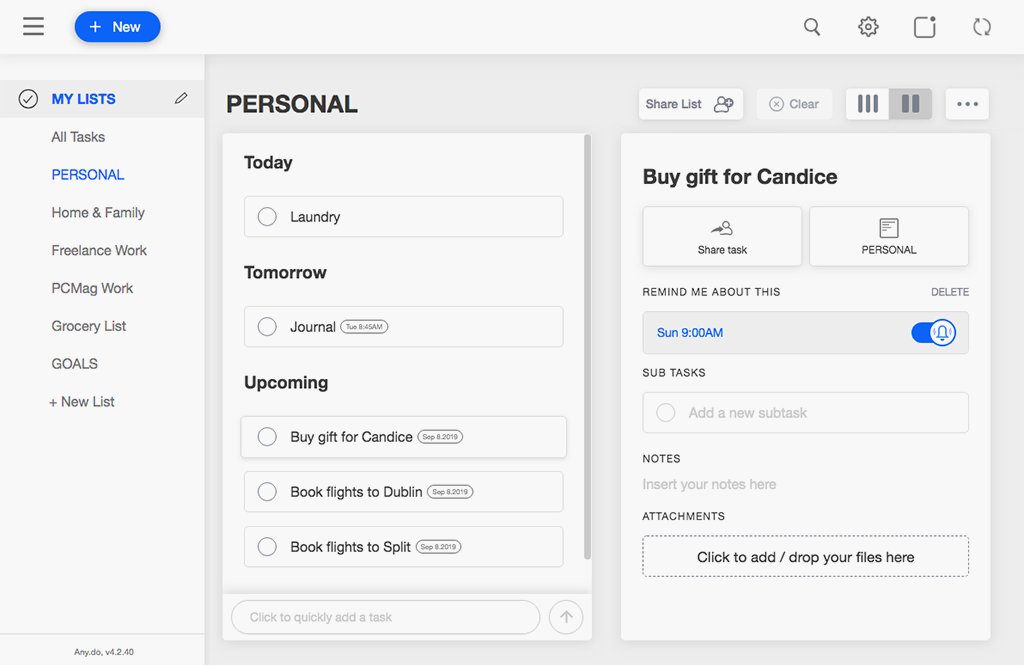
Source: https://any.do/
Any.do is a sleek and user-friendly option among daily planner apps, blending style with practical task management. It’s designed for individuals and small teams who want an elegant tool to organize their day. With its focus on simplicity and a polished interface, Any.do appeals to users seeking a straightforward planning experience.
Any.do Features
Any.do offers a clean design paired with essential features, making it one of the good planner apps for daily use. It balances tasks and schedules in a way that’s easy to navigate. Here’s what it includes:
- Tasks: Add tasks with due dates, reminders, and notes.
- Calendar: View tasks alongside events in a unified layout.
- Moments: A daily review feature to plan your day each morning.
- Integrations: Syncs with Google Calendar, WhatsApp, and more.
- Lists: Categorize tasks into lists like “Work” or “Personal.”
- Voice Entry: Add tasks hands-free by speaking them aloud.
Any.do stands out among apps for daily planner needs with its Moments feature, which prompts users to prioritize tasks daily. The calendar integration adds convenience for those who need a basic daily schedule app.
Any.do Pros and Cons
Any.do provides a solid planning foundation with some limitations. Here’s an objective look:
Pros
- Attractive, intuitive interface for easy use.
- Free version includes tasks and calendar syncing.
- Moments feature encourages daily planning.
- Voice entry speeds up task creation.
- Cross-platform availability (web, iOS, Android).
- Simple collaboration via shared lists.
Cons
- Premium features like integrations require payment.
- Limited functionality for complex projects.
- No advanced reporting or analytics.
- Occasional sync delays reported by users.
- Basic design may not suit power users.
- Fewer customization options than some rivals.
These points outline Any.do’s strengths for casual planning and its constraints for more demanding needs.
Any.do Pricing & Free Version
Any.do’s free plan covers basic tasks, calendar syncing, and Moments, making it a decent pick among free daily planning apps. The Premium plan starts at $3 per month (billed annually), adding recurring tasks and integrations. It’s an affordable choice for personal schedule apps.
8. Sunsama
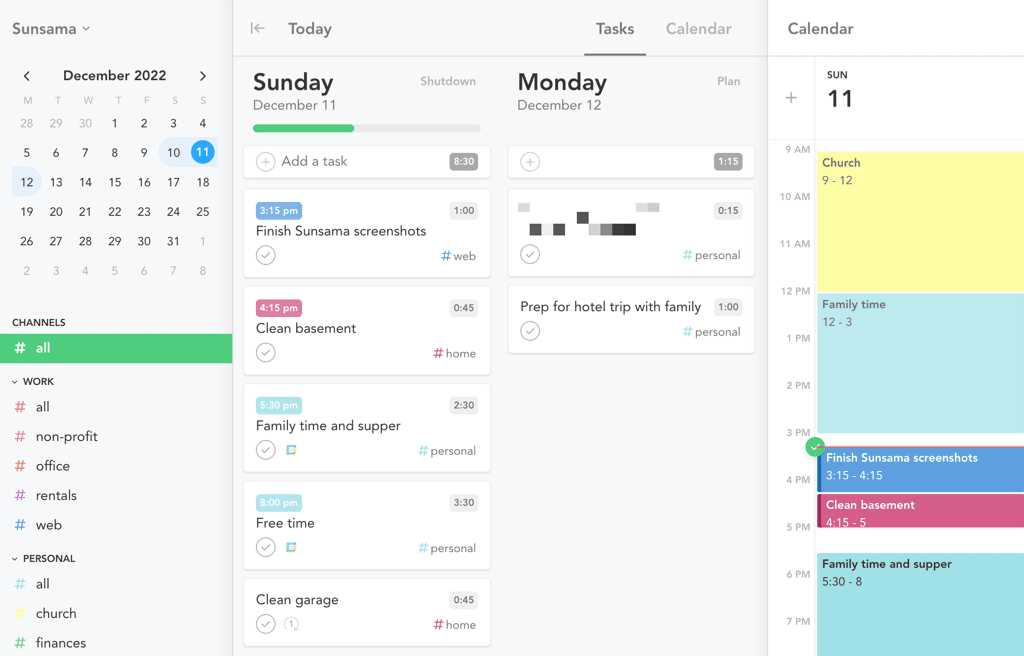
Source: https://sunsama.com/
Sunsama is a premium daily planner app tailored for professionals who value structured planning and time-blocking. It’s designed to guide users through their day with a focus on intentional task management. While it’s aimed at those willing to invest in a high-end tool, Sunsama offers a polished experience for organizing daily schedules.
Sunsama Features
Sunsama emphasizes guided planning and integrates with popular work tools, making it one of the apps for daily planning with a professional edge. Its features cater to users who prefer a deliberate approach. Here’s what it offers:
- Guided Planning: Daily prompts help set priorities and goals.
- Time-Blocking: Assign tasks to specific time slots on your calendar.
- Integrations: Pulls tasks from Trello, Asana, and Google Calendar.
- Calendar View: Displays tasks and events in a unified timeline.
- Analytics: Tracks time spent on tasks for productivity insights.
- Focus Mode: Minimizes distractions during work sessions.
Sunsama stands out among best day planning apps for its time-blocking focus and clean design. It’s built for users who need a detailed daily planner application to align tasks with their schedule.
Sunsama Pros and Cons
Sunsama delivers a focused planning experience with some trade-offs. Here’s a balanced overview:
Pros
- Guided planning simplifies daily prioritization.
- Time-blocking supports structured schedules.
- Strong integrations with popular tools.
- Clean interface enhances usability.
- Analytics provide useful time insights.
- Syncs smoothly with existing calendars.
Cons
- No free version, only a 14-day trial.
- Higher cost may not suit all budgets.
- Limited customization options.
- Setup can take time for new users.
- Less ideal for casual or basic planning.
- Feature set may feel niche for some.
These points highlight Sunsama’s strengths for dedicated planners and its boundaries for broader use.
Sunsama Pricing & Free Version
Sunsama has no free plan, offering a 14-day trial before charging $20 per month. This positions it as a premium option among schedule planner apps, aimed at users who need advanced daily planning tools and are willing to pay for them.
9. Google Calendar
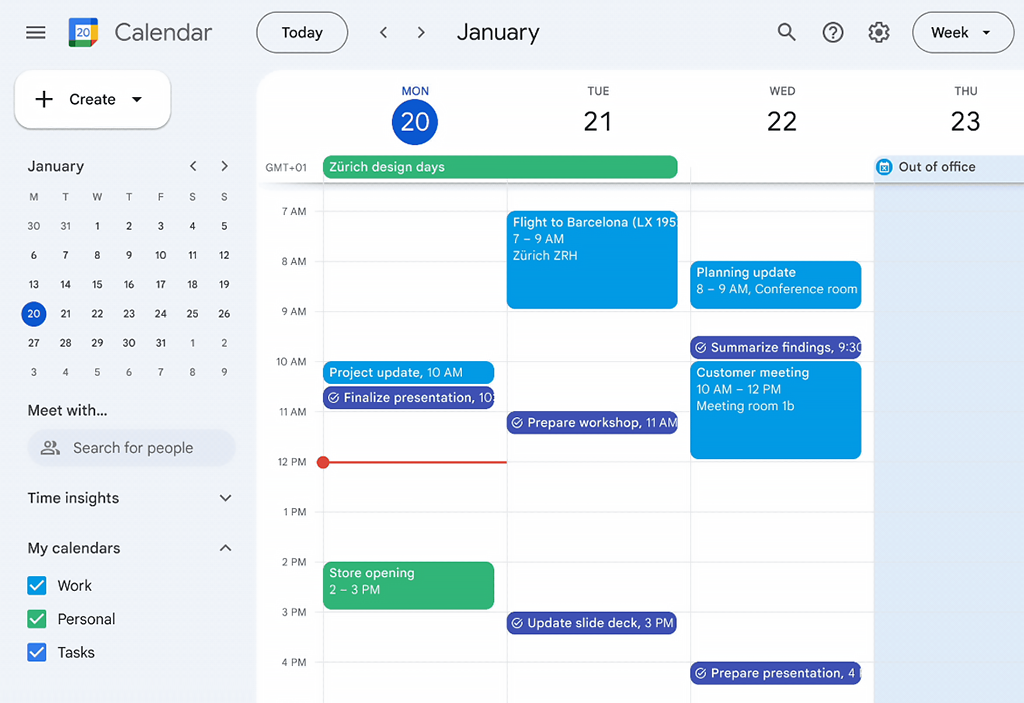
Source: https://calendar.google.com/
Google Calendar is a widely used calendar planning app that doubles as a simple daily planner for millions of users. It’s a staple tool for those who need a reliable, no-cost way to manage schedules and events. Integrated into the Google ecosystem, it’s a familiar choice for organizing daily routines.
Google Calendar Features
Google Calendar focuses on event scheduling with basic task features, making it one of the good schedule apps for straightforward planning. Its simplicity is its strength. Here’s what it provides:
- Events: Schedule meetings, appointments, or deadlines with ease.
- Reminders: Set alerts for tasks or events.
- Goals: Add personal objectives, like exercise, with auto-scheduling.
- Sharing: Collaborate on calendars with family or teams.
- Integrations: Syncs with Gmail, Google Tasks, and Drive.
- Views: Switch between day, week, or month layouts.
Google Calendar is a solid pick among best apps for calendar planning, offering a clean interface and broad accessibility. It’s ideal for users who want a basic daily schedule app without extra complexity.
Google Calendar Pros and Cons
Google Calendar provides a dependable planning foundation with some limitations. Here’s an objective look:
Pros
- Free and accessible with a Google account.
- Intuitive event scheduling and reminders.
- Seamless integration with Google tools.
- Multi-device syncing for convenience.
- Shared calendars support collaboration.
- Simple goal tracking for personal use.
Cons
- Limited task management features.
- No advanced customization options.
- Basic functionality compared to dedicated apps.
- Relies on other tools for deeper planning.
- Interface can feel dated to some users.
- Minimal analytics or reporting.
These points show its reliability for basic needs and its constraints for more robust planning.
Google Calendar Pricing & Free Version
Google Calendar is entirely free with a Google account, including all features like events, reminders, and sharing. This makes it a top choice among free daily planning apps for users who prioritize simplicity and cost.
10. Structured
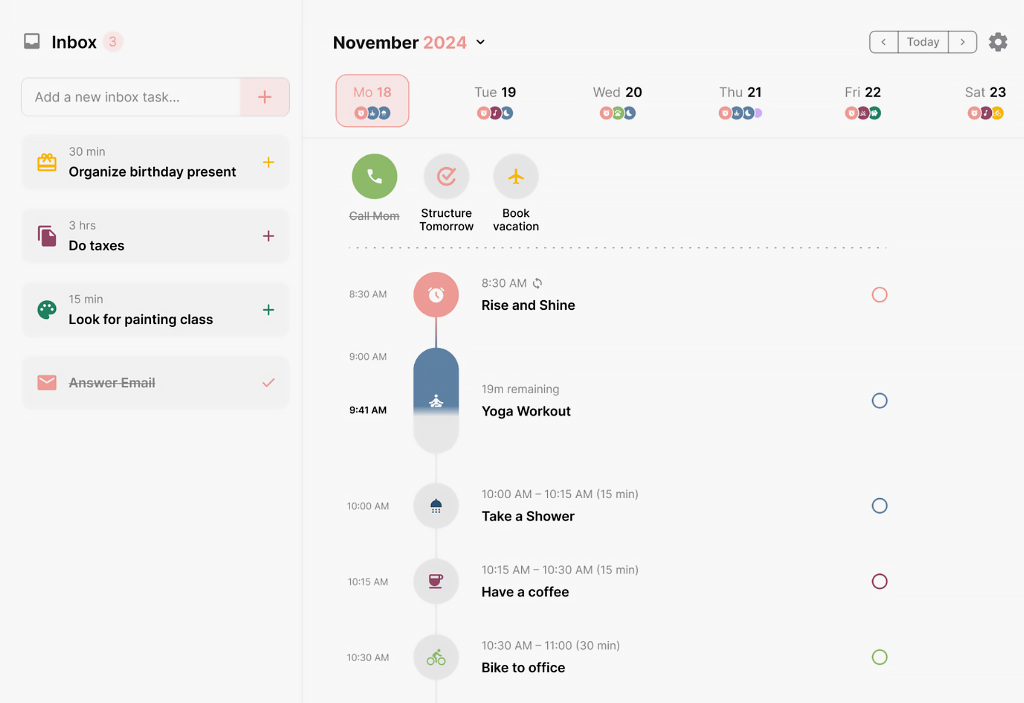
Source: https://structured.app/
Structured is a visually appealing day planner app designed for individuals who enjoy time-blocking and simplicity. Tailored for Apple users, it offers a clean, timeline-based approach to daily planning. It’s a niche tool that prioritizes structure and ease of use for organizing your day.
Structured Features
Structured focuses on creating a clear daily schedule with a minimalist design, making it one of the good day planner apps for personal use. Its features are straightforward and visually driven. Here’s what it includes:
- Timeline: Plan your day with a visual schedule of tasks and events.
- Tasks: Add to-dos with specific time slots and durations.
- Reminders: Get notifications to stay on track.
- iCloud Sync: Access plans across Apple devices like iPhone and Mac.
- Customization: Color-code tasks for quick recognition.
- Minimalist Design: A distraction-free interface for focused planning.
Structured shines among personal schedule apps with its timeline view, which helps users see their day at a glance. It’s a simple yet effective option for those who prefer apps for daily planning on Apple platforms.
Structured Pros and Cons
Structured offers a focused planning experience with some limitations. Here’s a balanced look:
Pros
- Beautiful timeline view for time-blocking.
- Free version includes core planning features.
- Easy to use for daily organization.
- Seamless iCloud syncing for Apple users.
- Customizable colors enhance visibility.
- Lightweight and fast performance.
Cons
- Limited to iOS and macOS platforms.
- No team collaboration features.
- Basic functionality compared to broader tools.
- No web or Android access.
- Lacks advanced task management options.
- Pro upgrade needed for extra features.
These points highlight Structured’s appeal for Apple fans and its boundaries for wider use.
Structured Pricing & Free Version
Structured’s free plan covers basic planning, timelines, and syncing, making it a solid pick among free daily planner apps for iOS users. The Pro version is a one-time purchase of $9.99, adding recurring tasks and icons. It’s a budget-friendly option for best day planner apps on Apple devices.
Benefits of Daily Planner Apps
Daily planner apps have become indispensable tools for individuals and teams alike, offering a wide range of benefits that go beyond simple task management. Whether you’re a busy professional, a student, or someone juggling multiple responsibilities, these apps can transform the way you organize your day, prioritize tasks, and achieve your goals. Here’s a deeper look at the key benefits of using daily planner apps:
- Improved Time Management: Plan your day efficiently and avoid wasting time.
- Increased Productivity: Stay focused on your priorities and accomplish more.
- Better Organization: Keep track of tasks, deadlines, and appointments in one place.
- Enhanced Collaboration: Share schedules and tasks with team members.
- Flexibility: Access your schedule from anywhere, on any device.
Daily planner apps are more than just digital to-do lists. They are powerful tools that can help you take control of your time, boost your productivity, and achieve your goals with ease. Whether you’re managing a busy work schedule or balancing personal commitments, these apps can make a significant difference in your daily life.
FAQ
What are Daily Planner Apps, and How Do They Work?
Daily planner apps are digital tools designed to help you organize tasks, schedules, and goals in one place.
They typically feature task lists, calendars, and reminders, allowing you to plan your day, week, or month efficiently. Most work by letting you input tasks or events, set deadlines, and receive notifications, often syncing across devices like phones and computers.
Why should I Use a Daily Planner App instead of Paper?
Unlike paper planners, daily planner apps offer dynamic features like instant updates, automatic reminders, and the ability to edit plans on the go. They save time by syncing with calendars or email, reducing the need to rewrite schedules.
Digital tools also store your data securely, often with backups, and many are accessible across multiple devices, providing flexibility that paper can’t match.
Can Daily Planner Tools Improve My Productivity?
Yes, these apps can boost productivity by helping you prioritize tasks, set clear deadlines, and avoid overcommitting. Features like recurring tasks or time-blocking encourage consistent habits, while reminders keep you on track.
Many users find that having a visual overview of their day reduces stress and helps them focus on what matters most, though effectiveness depends on how regularly you use the tool and tailor it to your needs.
Are Daily Planner Programs Suitable for Team Use?
Many daily planner apps support teamwork by offering features like shared schedules, task assignments, or collaborative lists. These allow multiple users to coordinate efforts, track progress, and communicate within the app.
While some are more geared toward individual planning, those with collaboration tools can streamline group projects or family schedules, ensuring everyone stays aligned on deadlines and responsibilities.
